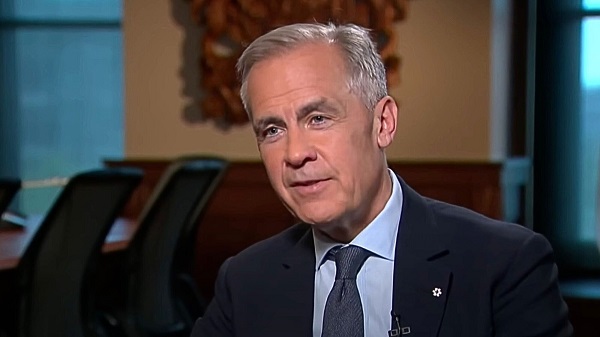Entertainment
Bill Bourne… Madagascar Slim… on their way to Red Deer for September 27th performance
Madagascar Slim reflects on the joys of belonging to Tri-Continental
By Mark Weber
Anyone who has ever taken in the sonic magic of Tri-Continental can’t help but notice the rare and accomplished musicians that make up this Internationally acclaimed group.
Known the world over for their compelling, intricately crafted tunes, Tri- Continental will be performing in Red Deer Sept. 27th in a concert presented by the Central Music Festival Society.
Local fans can check out what Madagascar Slim, Bill Bourne, Lester Quitzau and Michael Treadway have been up to of late as they feature tunes from last y ear’s disc Dust Dance plus cuts from their extensive repertoire, said Slim, a folk and blues guitarist who hails from Madagascar but settled in Ontario back in 1979.
First, a quick look at their roots. Slim recalls first hearing Bourne at a Toronto club some 20 years ago and being struck by his talent. “There was Bill in his top hat,” he recalled with a laugh. “I said, can I play this other guitar? He said, ‘Pick it up, man!’ “So I started playing with him, and he looked at me and said, ‘You want to come up with me onstage?’ Bourne later told him about Quitzau, and a new band was born. The possibilities from this collaboration would prove endless.
In the meantime, the gigs started coming fast and furious and it wasn’t long before they laid down tracks for their first disc. Typically, the men each bring their own works to the group and perform them as a singular creative force, continually finding fresh ways to interpret each other’s style. It’s always proven a hit with audiences and critics alike. As Slim noted, when Tri-Continental plays his music, it sizzles with a completely different vibe then it may have in another setting with other players. And that goes for each of the guys, he explains. “We add our personalities to the mixes.” That said, they have worked on music together, too. “We have embryos of ideas and we bounce them back and forth,” he notes. But essentially, the raw creativity is just simply sparked by being together. And really, the guys never completely know, in a sense, where things will go as a show unfolds. “We come up with a lot of the ideas right when we are playing,” he explains. “That’s what makes the magic.” Indeed.

Besides being a member of Tri-Continental and the world music group African Guitar Summit, Slim has also worked as a solo artist and a regular collaborator with blues singer Ndidi Onukwulu. All the guys have, for the past few years, been following their own artistic paths. But then Slim recalled landing an email from Quitzau about reconnecting. And the time seemed right.
It’s also been an exciting new ‘chapter’ for Tri-Continental with the addition of drummer Michael Treadway as well. “Michael has added a new dimension to the whole thing,” observes Slim, pointing out that with much of hi s own music based so solidly on rhythmic foundations, adding such a strong percussive element is nothing short of exhilarating.
“As soon as Michael started playing I thought, oh my goodness. This is it! I really felt totally comfortable. And he just jumped into it and made it his home, too,” he added. “I’m really appreciative of the fact that he’s playing with us. He’s a joy to be on tour with – very bubbly, very enthusiastic.”
Slim moved to Canada in 1979 to study English and accounting at Seneca College, pursuing music with the folk group La Ridaine while studying. As time passed, his ‘calling’ to music became more obvious. It’s been a memorable ride to be sure, with his talents seemingly boundless. And to this day, he loves nothing better than hitting the stage with the men of Tri- Continental. They don’t live near each other, but that’s also what also makes those reunions that much sweeter. One can sense the sheer joy in Slim’s voice when he chats about not only the creative experiences the members are sure to share in the months ahead, but also the re-connecting with fans old and new. “When you don’t see each other for awhile, it seems like it brings us closer,” he says with gratitude. “I’m really happy when I see those guys!”
![]()
For more information or to purchase tickets, check out www.centralmusicfest.com.
Entertainment
Pedro Pascal launches attack on J.K. Rowling over biological sex views

 MxM News
MxM News
Quick Hit:
Pedro Pascal, star of HBO’s The Last of Us, ignited backlash this week after publicly hurling an expletive-laced insult at author J.K. Rowling in response to her support for a landmark UK ruling that upheld the legal definition of sex as biological. Rowling celebrated the decision, which affirms the rights of women to single-sex spaces—a view shared by many who advocate for the safety and integrity of women’s rights. Pascal, a vocal progressive and LGBTQ+ activist, labeled Rowling a “heinous loser,” aligning himself with calls to boycott HBO’s upcoming Harry Potter reboot.
Pedro Pascal calls J.K. Rowling a “heinous loser” after she celebrated the Supreme Court’s ruling regarding trans women’s legal identities. pic.twitter.com/LEGMD79PjQ
— Pop Base (@PopBase) April 24, 2025
Key Details:
-
Pedro Pascal responded on Instagram to Rowling’s post celebrating a UK court ruling that legally defined “sex” as biological.
-
Pascal echoed an activist’s call for a fan-led boycott of the Harry Potter reboot, saying Rowling’s stance was “heinous LOSER behavior.”
-
HBO has downplayed concerns of a boycott, citing the blockbuster success of Hogwarts Legacy despite similar activist campaigns.
Diving Deeper:
The latest clash in the culture war surrounding Harry Potter author J.K. Rowling and the trans activist movement reached a new level of hostility this week when actor Pedro Pascal, a key face of HBO’s entertainment slate, stooped to name-calling on social media. His remarks came in response to Rowling’s defense of the United Kingdom’s recent court decision, which reaffirmed that sex, under British law, means biological sex—a ruling many women’s rights advocates hailed as a long-overdue step toward protecting vulnerable female spaces such as shelters, hospital wards, and sports.
Rowling, whose views on the importance of distinguishing biological sex from gender identity have made her a target of trans activists for years, posted a pointed but unapologetic reaction: “I love it when a plan comes together.” She added, “I get the same royalties whether you read [my books] or burn them. Enjoy your marshmallows!”
In the comments of a post by activist Tariq Ra’ouf—who had attacked Rowling and promoted a boycott of HBO’s Harry Potter reboot—Pascal added his own vulgar commentary: “Awful disgusting SHIT is exactly right. Heinous LOSER behavior.” While Pascal did not explicitly mention Harry Potter, the post he endorsed included calls to tank all future franchise content, including theme parks and merchandise.
Pascal’s involvement with HBO places the network in a difficult position. As the Emmy-nominated co-lead of The Last of Us, one of HBO’s crown jewels, Pascal’s comments are being widely interpreted as an implicit endorsement of the boycott. While HBO has attempted to downplay the activist push, the tension is palpable. Casey Bloys, HBO’s chief content officer, previously noted that the 2023 video game Hogwarts Legacy, which also faced calls for boycotts due to Rowling’s views, still became the year’s top-selling game.
Pascal’s activism is personal as well as political. His sister, Lux Pascal, publicly transitioned in 2021, and he has frequently signaled support for trans activism. At the UK premiere of Marvel’s Thunderbolts, Pascal wore a shirt that read “Protect the Dolls,” a slogan popularized in trans activist circles.
Rather than “heinous,” Rowling’s remarks represent a reasoned defense of biological reality and a pushback against an increasingly aggressive ideology that demands conformity and punishes dissent. Her critics, like Pascal, resort to vulgarity and character attacks instead of engaging with the substance of her argument. But Rowling has stood firm in supporting women’s rights and advocating for clarity in laws that impact everything from sports to safety in single-sex spaces—positions grounded in truth, not hate.
Business
California planning to double film tax credits amid industry decline

From The Center Square
By
California legislators have unveiled a bill to follow through with the governor’s plan of more than doubling the state’s film and TV production tax credits to $750 million.
The state’s own analysis warns it’s likely the refundable production credits generate only 20 to 50 cents of state revenue for every dollar the state spends, and the increase could stoke a “race to the bottom” among the 38 states that now have such programs.
Industry insiders say the state’s high production costs are to blame for much of the exodus, and experts say the cost of housing is responsible for a significant share of the higher costs.
The bill creates a special carve-out for shooting in Los Angeles, where productions would be able to claim refundable credits for 35% of the cost of production.
California Gov. Gavin Newsom announced his proposal last year and highlighted his goal of expanding the program at an industry event last week.
“California is the entertainment capital of the world – and we’re committed to ensuring we stay that way,” said Newsom. “Fashion and film go hand in hand, helping to express characters, capture eras in time and reflect cultural movements.”
With most states now offering production credits, economic analysis suggests these programs now produce state revenue well below the cost of the credits themselves.
“A recent study from the Los Angeles County Economic Development Corporation found that each $1 of Program 2.0 credit results in $1.07 in new state and local government revenue. This finding, however, is significantly overstated due to the study’s use of implausible assumptions,” wrote the state’s analysts in a 2023 report. “Most importantly, the study assumes that no productions receiving tax credits would have filmed here in the absence of the credit.”
“This is out of line with economic research discussed above which suggests tax credits influence location decisions of only a portion of recipients,” continued the state analysis. “Two studies that better reflect this research finding suggest that each $1 of film credit results in $0.20 to $0.50 of state revenues.”
“Parks and Recreation” stars Rob Lowe and Adam Scott recently shared on Lowe’s podcast how costs are so high their show likely would have been shot in Europe instead.
“It’s cheaper to bring 100 American people to Ireland than to walk across the lot at Fox past the sound stages and do it and do it there,” said Lowe.
“Do you think if we shot ‘Parks’ right now, we would be in Budapest?” asked Scott, who now stars in “Severance.”
“100%,” replied Lowe. “All those other places are offering 40% — forty percent — and then on top of that there’s other stuff that they do, and then that’s not even talking about the union stuff. That’s just tax economics of it all.”
“It’s criminal what California and LA have let happen. It’s criminal,” continued Lowe. “Everybody should be fired.”
According to the Public Policy Institute of California, housing is the single largest expense for California households.
“Across the income spectrum, 35–44% of household expenditures go to covering rent, mortgages, utilities and home maintenance,” wrote PPIC.
The cost of housing due to supply constraints now makes it nearly impossible for creatives to get their start in LA, said M. Nolan Gray, legislative director at housing regulatory reform organization California YIMBY.
“Hollywood depends on Los Angeles being the place where anybody can show up, take a big risk, and pursue their dreams, and that only works if you have a lot of affordable apartments,” said Gray to The Center Square. “We’ve built a Los Angeles where you have to be fabulously wealthy to have stable and decent housing, and as a result a lot of folks either are not coming, or those who are coming need to paid quite a bit higher to make it worth it, and it’s destroying one of California’s most important industries.”
“Anybody who arrived in Hollywood before the 2010s, their story is always, ‘Yeah, I showed up in LA, and I lived in a really, really dirt-cheap apartment with like $10 in my pocket.’ That just doesn’t exist anymore,” continued Gray. “Does the Walt Disney of 2025 not take the train from Kansas City to LA? Almost certainly not. If he goes anywhere, he goes to Atlanta.”
-

 COVID-1911 hours ago
COVID-1911 hours agoOntario man launches new challenge against province’s latest attempt to ban free expression on roadside billboards
-

 Energy19 hours ago
Energy19 hours agoThis Canada Day, Celebrate Energy Renewal
-

 Business2 days ago
Business2 days agoWhile China Hacks Canada, B.C. Sends Them a Billion-Dollar Ship Building Contract
-

 Alberta1 day ago
Alberta1 day agoSo Alberta, what’s next?
-

 Alberta10 hours ago
Alberta10 hours agoAlberta Next Takes A Look At Alberta Provincial Police Force
-

 Bjorn Lomborg2 days ago
Bjorn Lomborg2 days agoThe Physics Behind The Spanish Blackout
-

 Alberta12 hours ago
Alberta12 hours agoCanadian Oil Sands Production Expected to Reach All-time Highs this Year Despite Lower Oil Prices
-

 Business14 hours ago
Business14 hours agoPotential For Abuse Embedded In Bill C-5





